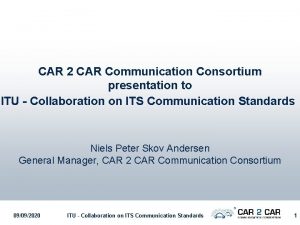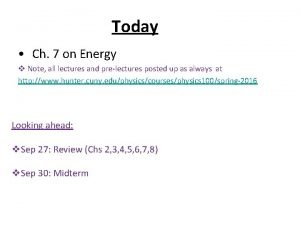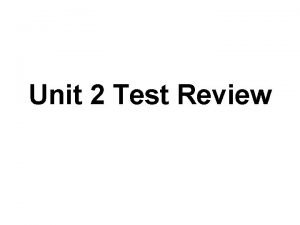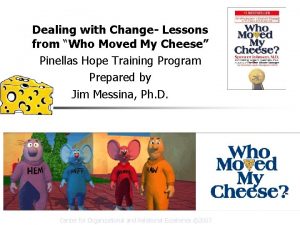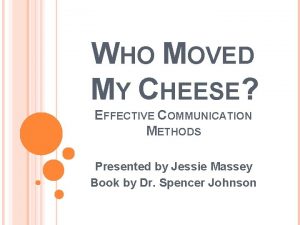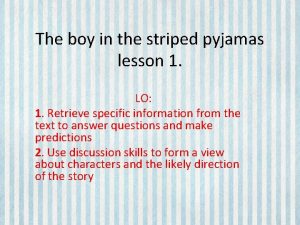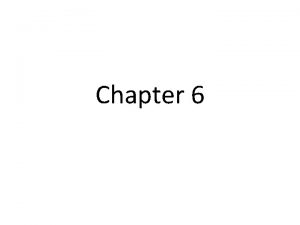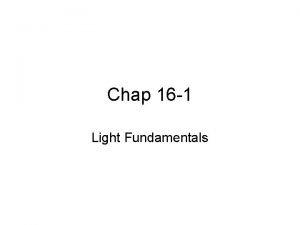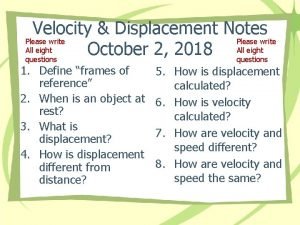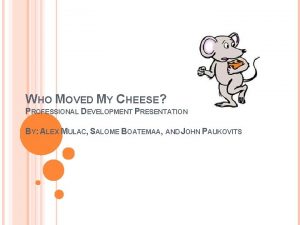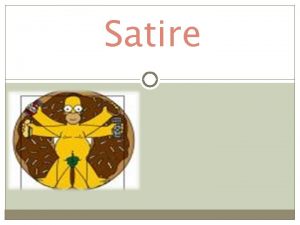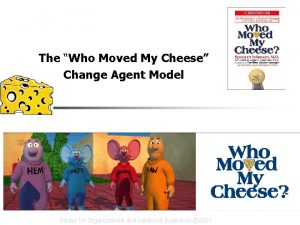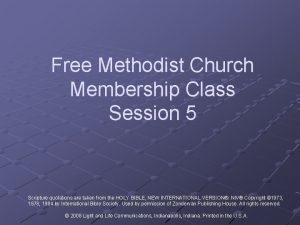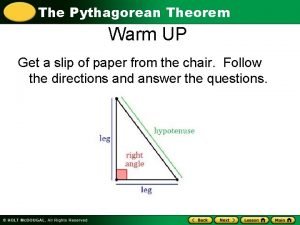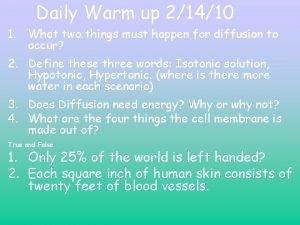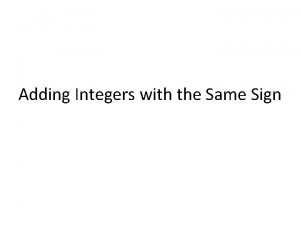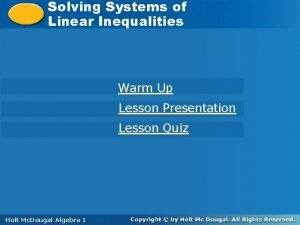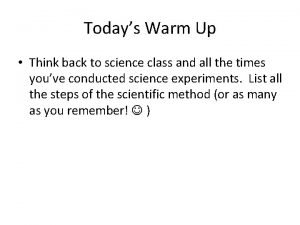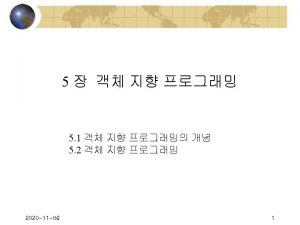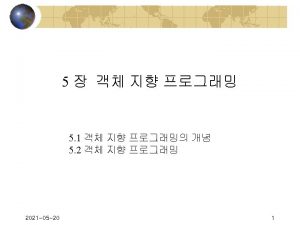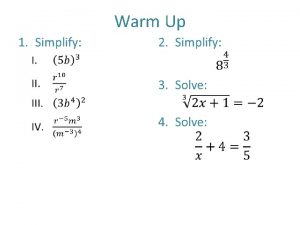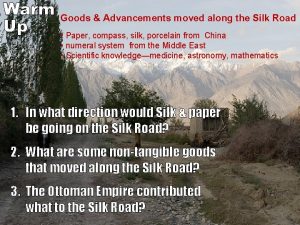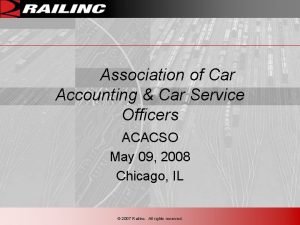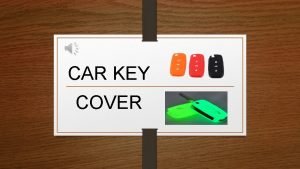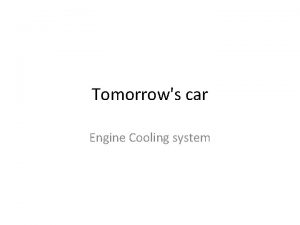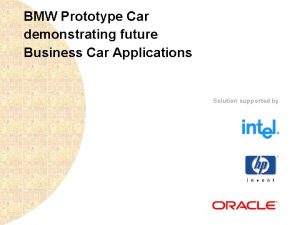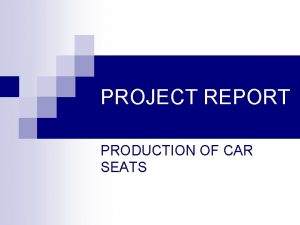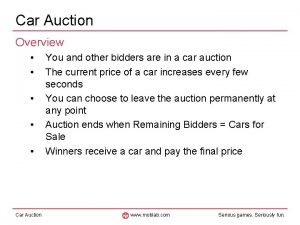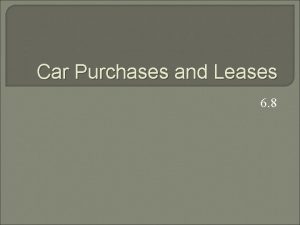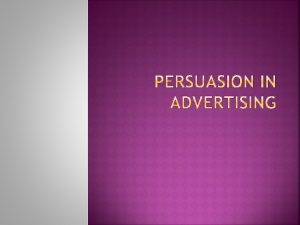Warm Up n When a car is moved




























- Slides: 28

Warm Up n When a car is moved into a painting chamber, a mist of paint is sprayed around it. When the body of the car is given a sudden electric charge and the mist of paint is attracted to it, presto – the car is quickly and uniformly painted. What does the phenomenon of polarization have to do with this?

Electrostatics Jeopardy Charge Atoms Transfer Equilibrium $100 $200 $300 $400 $500

1 - $100 n How do protons and electrons differ in their electric charge? n Protons are positive (+) and electrons are negative (-)

1 - $200 n How do like charges behave toward each other? How do unlike charges behave toward each other? n Repel, Attract

1 - $300 n Magnetic forces depend on magnetic materials. What comparable property underlies electrical forces? n Charge

1 - $400 n When you felt the electric force in the Sticky Tape Lab, what was actually touching? n Electric fields

1 - $500 n Describe the flow of electric charge. n What is current? Flowing electrons. Why do they flow? One pushes the next and they spread out. Why? Electrostatic repulsion.

2 - $100 n Type question to appear here n Type answer to appear with a mouse-click here

2 - $200 n Type question to appear here n Type answer to appear with a mouse-click here

2 - $300 n Type question to appear here n Type answer to appear with a mouse-click here

2 - $400 n Type question to appear here n Type answer to appear with a mouse-click here

2 - $500 n Type question to appear here n Type answer to appear with a mouse-click here

3 - $100 n What is made of atoms? n Everything!

3 - $200 n What are three components that make up an atom? n Proton, Electron, and Neutron

3 - $300 n Which of the components that make up atoms is mobile? n Electron

3 - $400 n Is an electron in a hydrogen atom the same as an electron in a uranium atom? n Yes, all electrons, protons, and neutrons are the same

3 - $500 n In a normal atom, how many electrons are there compared with protons? n Equal amounts

4 - $100 n Which two methods of charging objects involve touching? n Friction and contact

4 - $200 n Distinguish between an insulator and a conductor. n Conductors allow electrons to flow/move easily, while insulators do not

4 - $300 n How does an object become negatively charged? Positively? n Gains electrons, loses electrons

4 - $400 n If a glass rod that is rubbed with a plastic dry cleaner’s bag acquires a certain charge, why does the plastic bag have exactly the same amount of opposite charge? n However many electrons the glass rod gained, the plastic bag lost; charge is conserved!

4 - $500 n Explain how an object that is electrically neutral can be attracted to an object that is charged. n Polarization: the charged object either attracts or repels the electrons in the uncharged object, leaving areas of great negative and positive concentration

5 - $100 n Describe how electrons will distribute themselves on a conducting surface. n They will repel and spread out as much as possible.

5 - $200 n Describe how electrons redistribute themselves to achieve equilibrium. n They will repel and spread out as much as possible to get as close to a neutral equilibrium state as possible.

5 - $300 n If a charged sphere is brought in contact with another equally sized uncharged (neutral) sphere, how will the charges distribute themselves? n Equally

5 - $400 n If a charged sphere is brought in contact with another uncharged (neutral) sphere that is 50 x bigger, how will the charges distribute themselves? n The uncharged sphere will have 50 x more charge.

5 - $500 n You have two equal sized spheres, one with 2+ and 6 - charges, and one with 5+ and 5 charges; what will be the charge on each sphere when the sphere are brought in contact with each other? n -2 and -2

Final Jeopardy n Type question to appear here n Type answer to appear with a mouse-click here
 Qq moves
Qq moves Car 2 car consortium
Car 2 car consortium A 1000 kg car and a 2000 kg car is hoisted the same height
A 1000 kg car and a 2000 kg car is hoisted the same height Thomas malthus concluded that
Thomas malthus concluded that Who moved my cheese lessons
Who moved my cheese lessons Who moved my cheese summary
Who moved my cheese summary Since hanna moved away
Since hanna moved away Why did bruno's family suddenly moved house
Why did bruno's family suddenly moved house Elements are moved between minerals during metamorphism by:
Elements are moved between minerals during metamorphism by: Can you lend larry and me that literary cavalcade
Can you lend larry and me that literary cavalcade What is light
What is light We will not be moved when everything around is shaking
We will not be moved when everything around is shaking Who moved my cheese essay
Who moved my cheese essay Who stopped the sun and moved the earth
Who stopped the sun and moved the earth Splagchnizomai
Splagchnizomai A book is moved once around the edge of a tabletop
A book is moved once around the edge of a tabletop Who moved my cheese professional development
Who moved my cheese professional development The onion girl moved to tears
The onion girl moved to tears Cheese station n
Cheese station n Free methodist book of discipline
Free methodist book of discipline Texas history warm ups
Texas history warm ups Identical rhyme examples
Identical rhyme examples Pythagorean theorem warm up
Pythagorean theorem warm up Cold air mass overtakes warm air mass
Cold air mass overtakes warm air mass The warm up osmosis
The warm up osmosis Tinman warmup
Tinman warmup An elevator ride down 27 stories
An elevator ride down 27 stories 4-5 lesson quiz systems of linear inequalities
4-5 lesson quiz systems of linear inequalities Warm up to science
Warm up to science

